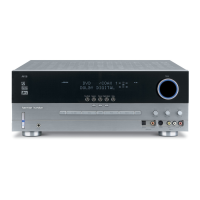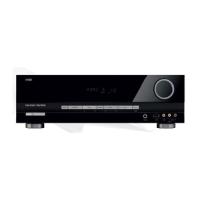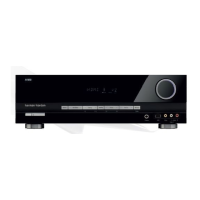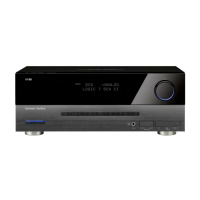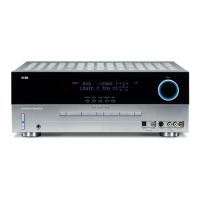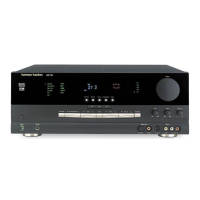
Do you have a question about the Harman Kardon AVR 135 and is the answer not in the manual?
| Type | AV Receiver |
|---|---|
| Number of Channels | 5.1 |
| Frequency Response | 10Hz - 100kHz |
| Signal-to-Noise Ratio | 95dB |
| Input Sensitivity | 200mV |
| THD | 0.07% |
| Surround Sound Formats | Dolby Digital, DTS |
| Tuner Presets | 30 |
| Input Impedance | 47 kOhm |
| Input Digital Connectors | Coaxial, Optical |
| Dimensions | 440 x 165 x 380 mm |
| Power Output | 40W per channel |
Details the capabilities, technologies, and benefits of the AVR 135.
Covers voltage, cords, cabinet, grounding, and installation hazards.
Advice on where to place the unit for optimal performance and safety.
Instructions for cleaning and moving the unit safely.
Steps for unpacking and preparing the unit for use.
Main Power, Standby/On, Headphone Jack, Tone Mode.
Input Source Selector, Tuner Band Selector, Tuning Selector.
Surround Mode Selectors, Bass, Treble, Balance, Volume.
Speaker Selector, Delay, Digital Input, Set Button.
Display Lines, Input Indicators, Surround Mode Indicators.
Optical, Coaxial Digital Audio Inputs, Video Input Jacks.
Ports for FM/AM antennas and AC power cord.
Jacks for analog audio inputs/outputs and speaker wiring.
Ports for digital audio, composite, and S-video signals.
High-definition video inputs and multichannel analog inputs.
Buttons for powering the unit, selecting sources, and operating the tuner.
Buttons for controlling surround sound modes and DSP effects.
Buttons for menu navigation, system setup, and digital input selection.
Buttons for macros, volume, and other specific functions.
Initial setup and connection of the AVR 135 and related components.
Connecting analog/digital audio sources and speakers.
Connecting VCRs, DVD players, and other video devices.
Advice on choosing and positioning speakers for optimal sound staging.
Steps for programming bass management, calibrating levels, and setting delays.
Turning unit on/off, selecting sources, and volume control.
Selecting surround modes, adjusting bass, treble, and mute.
Using 6/8-Channel Direct Input and headphone listening.
Adjusting front-panel display fade and brightness.
Setting a default volume level for when the unit is powered on.
Direct Code Entry and Auto Search for programming.
Creating sequences of commands for frequent operations.
Steps to reset the unit's memory and restore factory settings.
